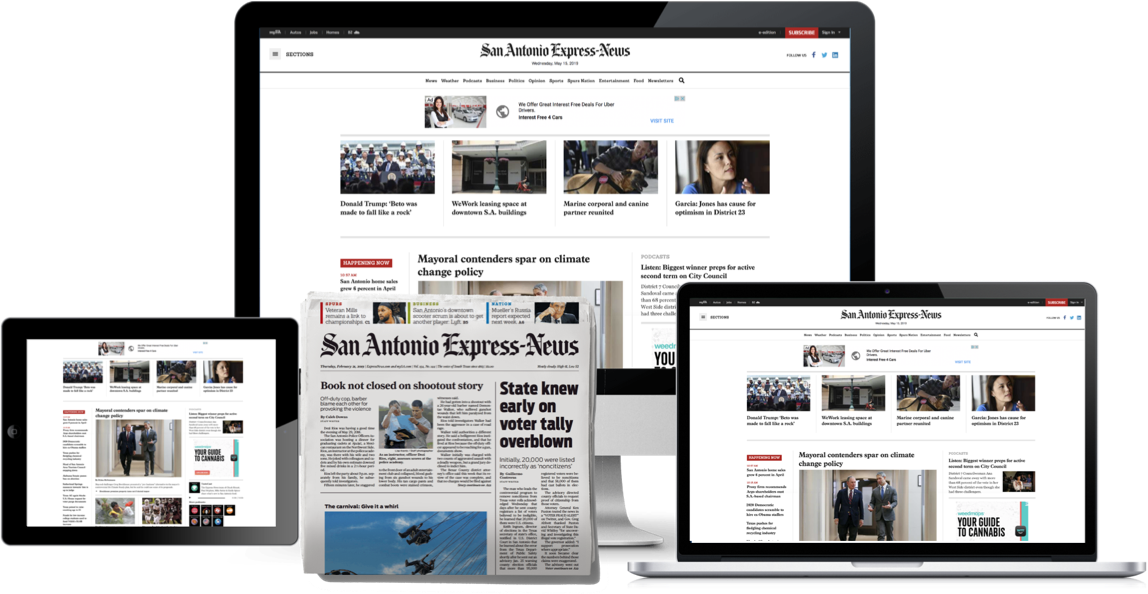Popular News Things To Know Before You Buy
Wiki Article
A Biased View of Popular News
Table of ContentsTop Guidelines Of Popular NewsPopular News for BeginnersWhat Does Popular News Mean?The Single Strategy To Use For Popular News
Age is additionally a factor in the means people see the function of social media sites. More youthful social networks information consumers are more likely to say it has impacted their knowing right. Regarding fifty percent of social media sites information consumers ages 18 to 29 (48%) say news on social media makes them better informed, contrasted with 37% of those 30 to 49, 28% of those 50 to 64, and 27% of those 65 and older.Journalists weigh information values when determining whether or not to cover an occasion or announcement. Probably the most essential element of newsworthiness is whether or not the information product being communicated effects a news outlet's target market.
Research on a state's new tax code likely will not create the exact same passion throughout state borders. Occasionally professionals can help localize a larger national story that affects even more than simply a city or state.
If you are releasing newsworthy research study, loophole in MarComm before the article being published to ensure that the pitch can emphasize the newest aspect of the story: the publication of the study. Occasions and announcements that involve high-profile numbers are more most likely to generate media protection. Gos to from nationwide figures frequently require months of preparation because of expected community passion.
The smart Trick of Popular News That Nobody is Talking About
Stories often entail some type of conflict. Necessarily, these stories are virtually constantly questionable to some degree. Thankfully, college team and faculty are generally regarded as neutral professionals. We can assist mitigate potential reputational threat with these stories while additionally boosting the odds of creating protection. While most of the above information worths are intertwined, human rate of interest tales usually stand apart.Human passion elements can add information value to other stories that could appear to be doing not have in the other values. The uniqueness or curiosity of a situation can assist affect whether or not a news electrical outlet is most likely to cover a tale. While this is not an extensive list, inspecting to see if your information product or event has these qualities prior to contacting us will help you determine which components hold the most news value.

Popular News Things To Know Before You Buy
There is also significant evidence that more consumers can begin to pay for news in the futureif authors can comprehend them and offer them well. Half of those who do not spend for news proactively choose information and resemble clients in various means. And virtually 2 in 10 of those that don't register for news currently suggest they are inclined to begin to pay in the future.We after that ask a set of concerns to determine whether individuals pay for specific kinds of news resources (Popular News). We asked people to call the sources they utilize most oftenwhether they spend for them or nothow they utilize them, the particular points they think about crucial about them, and some related questions regarding the price and value of that resource
People are drawn to information in basic for two factors above others: A desire to be notified people (paper clients in particular are extremely encouraged by this) and since the magazine they subscribe to excels at covering specific topics regarding which those subscribers specifically care. While there are a host of reasons, the No.
More than 4 in 10 likewise cite the truth that loved ones sign up for the exact same product (Popular News). More than a 3rd of individuals claim they initially subscribed in response to a discount rate or promo. In print, individuals also are relocated site heavily to sign up for get coupons that save them cash, something that has untapped effects in digital
The smart Trick of Popular News That Nobody is Discussing
Concerning fifty percent are "news applicants," meaning they actively choose news rather than largely running into it in a much more easy way, though the information that nonpayers are looking for (in the meantime, at the very least) is frequently about national politics. Like clients, a lot of these people also get news multiple times a day, utilize the information in means comparable to customers, and have an interest in similar topics, including international or international information.
Of those who do pay, 54 percent sign up for newspapers in print or electronically, why not try this out which stands for 29 percent of Americans on the whole. A lot of them acquire a print magazine along with their newspaper and pay for 2 to four information resources in overall, some a lot more. And while 53 percent are long-time subscribers (5+ years), greater than a quarter (27 percent) have bought their newspaper registration within the past year.
Couple of print clients think it likely they will switch over to a digital-only registration in the future, and more than fifty percent of those that choose electronic have actually never ever paid for a print version of the exact same resource. Totally 75 percent of paper payers state they primarily read the paper in print, while 21 percent are primarily electronic users, and 4 percent describe themselves as uniformly split.
Report this wiki page